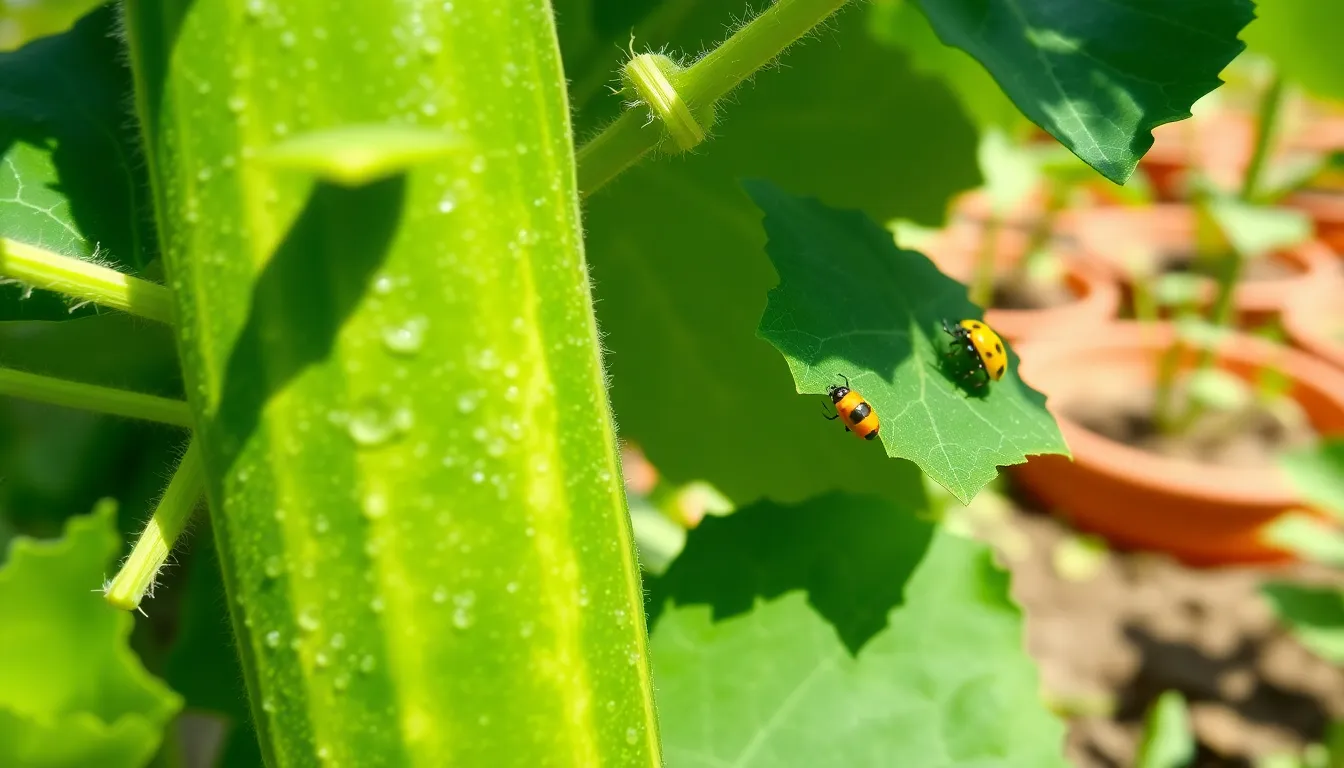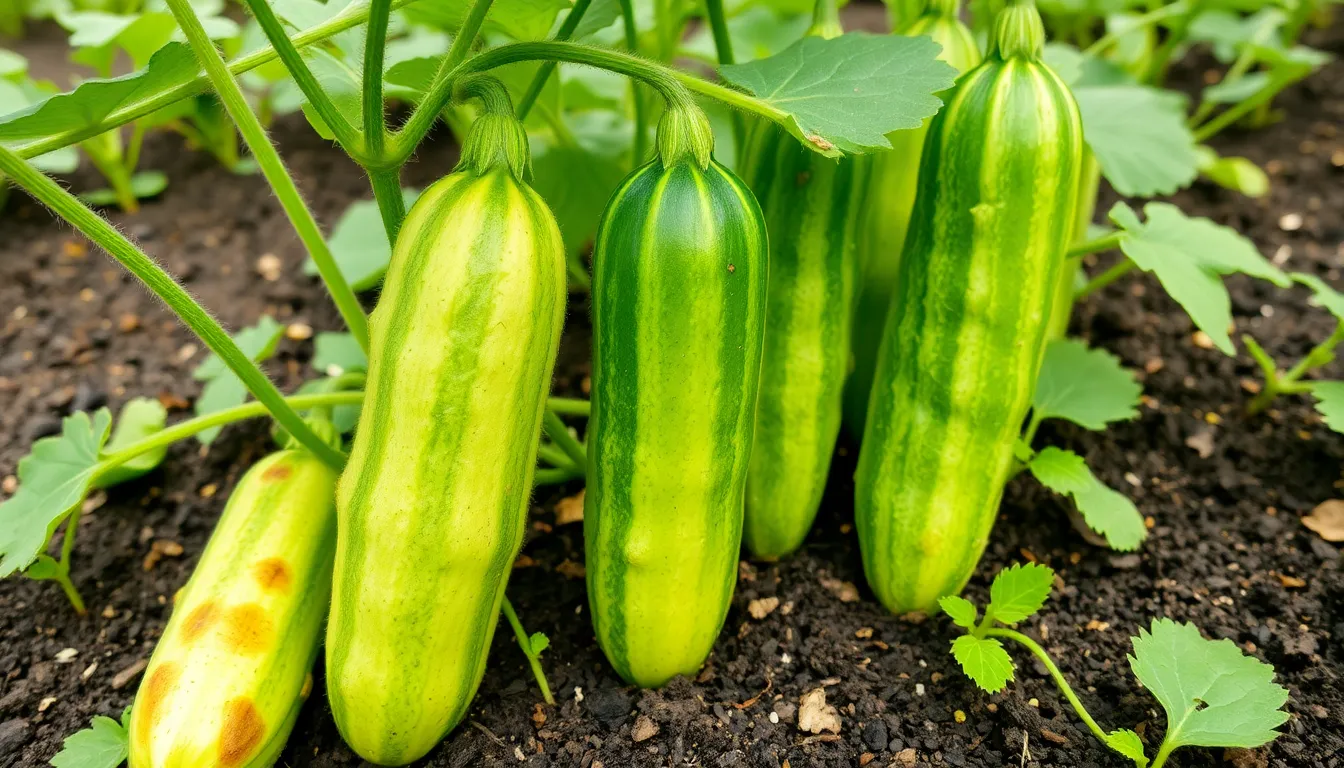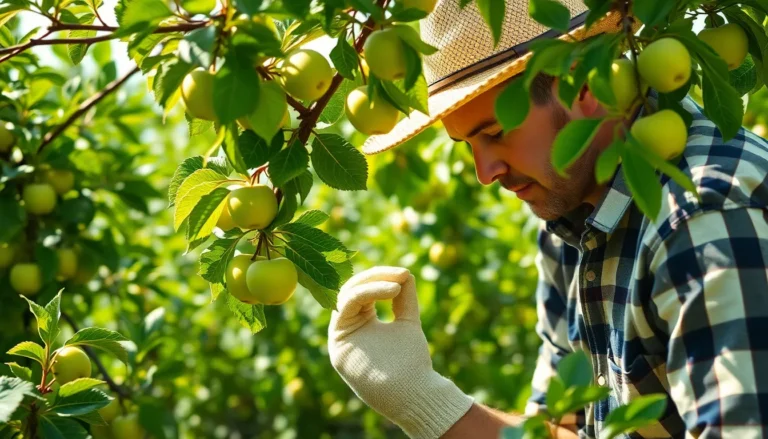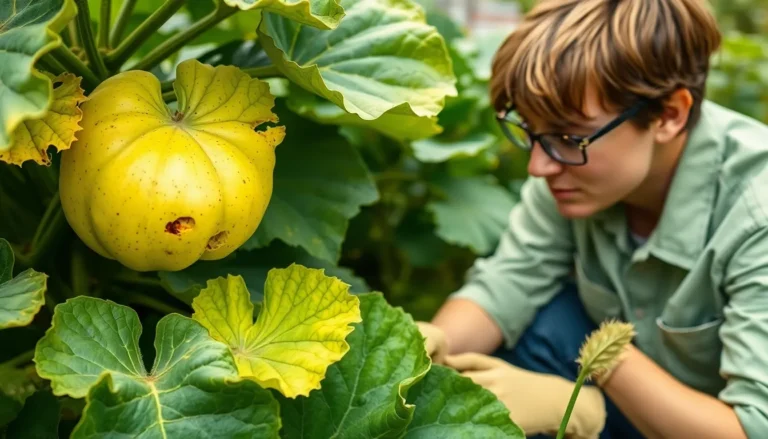
Cucumber Pests: Top Tips to Protect Your Garden and Maximize Harvests
Cucumbers are the refreshing stars of summer salads, but they come with their own set of uninvited guests. Cucumber pests can turn a thriving garden into a battleground faster than you can say “pickle.” From sneaky aphids to the dreaded cucumber beetle, these little critters have a knack for ruining your harvest and your mood.
Cucumber Pests
Cucumber pests pose significant threats to healthy plants. Aphids, small sap-sucking insects, weaken plants by extracting vital nutrients. Signs of an aphid infestation include curled or yellowing leaves and the presence of sticky honeydew.
Another common pest, cucumber beetles, inflicts damage by chewing on leaves and destroying flowers. They attract attention with their distinctive yellow and black coloration. Damage from these beetles often leads to weakened plants and reduced yields.
Spider mites, despite their tiny size, can cause considerable harm. They thrive in hot, dry conditions and leave fine webs on leaves, which can result in stippled foliage. Immediate action against spider mites can prevent extensive damage.
Whiteflies also contribute to cucumber problems. These pests lay eggs on the underside of leaves, leading to sap loss and potential disease transmission. Weak growth and wilting symptoms often indicate a whitefly infestation.
Additionally, squash vine borers can endanger cucumber plants as well. Adult moths lay eggs at the base of plants, and the resultant larvae tunnel into the stems, disrupting water and nutrient flow. Identifying the presence of frass, or droppings, serves as a warning sign.
Monitoring cucumber plants regularly keeps pests in check. Implementing preventive measures, such as crop rotation and companion planting, helps mitigate infestations. Effective control methods, including insecticidal soaps and neem oil, provide additional support in safeguarding cucumber crops.
Managing cucumber pests requires vigilance and prompt action, ensuring healthy and productive plants.
Common Types of Cucumber Pests

Cucumber plants face various pests that can significantly affect their health and productivity. Awareness of these pests is crucial for successful gardening.
Aphids
Aphids are small, soft-bodied insects that feed on cucumber sap, weakening plants. They reproduce quickly, creating large colonies in a short time. These pests cause leaves to curl and distort, leading to reduced yields. Additionally, aphids can transmit viral diseases, compounding the problem. Regular monitoring and the introduction of natural predators, like ladybugs, can help control aphid populations effectively.
Spider Mites
Spider mites thrive in hot, dry conditions, posing a serious threat to cucumber plants. These tiny arachnids extract plant sap, resulting in stippled leaves and yellowing. Affected plants may show fine webbing on the undersides of leaves. With rapid reproduction rates, spider mite infestations can escalate quickly. Implementing strategies like increasing humidity and using insecticidal soap can mitigate their impact and protect the plants.
Cucumber Beetles
Cucumber beetles are notorious for chewing through leaves and flowers, leading to significant damage. These pests can transmit bacteria that cause diseases like bacterial wilt. Adult beetles are easy to spot, as they are typically yellow or green with black stripes. Control measures include row covers and traps to reduce population levels. Employing companion planting with repellent plants, such as radishes, can also deter cucumber beetles effectively.
Symptoms of Infestation
Identifying symptoms of cucumber pest infestation is vital for maintaining healthy plants. Early detection enables effective intervention.
Physical Damage
Aphids create curled leaves and distorted growth. Cucumber beetles chew through foliage, leaving ragged holes. Spider mites cause stippling and discoloration on leaves. Whiteflies produce a sticky substance that attracts sooty mold. Squash vine borers tunnel into stems, leading to wilting and collapse. These visible signs serve as red flags, indicating the presence of pests. Damage can escalate rapidly if not addressed.
Impact on Plant Growth
Cucumber pests significantly hinder plant development. Nutrient loss from aphids weakens plants and reduces vitality. Cucumber beetles disrupt flower production, leading to fewer fruits. Poor photosynthesis occurs when spider mites reduce leaf surface area. Whiteflies can transmit diseases that further compromise plant health. Stunted growth often results from squash vine borers interfering with nutrient uptake. Overall, these pests can result in diminished harvests and overall plant decline.
Management and Control Strategies
Managing cucumber pests involves a combination of cultural practices and chemical treatments to maintain healthy plants and optimize yields.
Cultural Practices
Cultural practices emphasize prevention through proper management techniques. Crop rotation helps disrupt pest life cycles by planting cucumbers in different locations each season. Companion planting introduces beneficial companions, such as marigolds, that deter pests and attract natural predators. Maintaining adequate plant spacing ensures good air circulation, reducing humidity levels that favor pests like spider mites. Regularly monitoring plants allows gardeners to detect early signs of pest infestations and implement timely interventions. Keeping the garden tidy by removing debris and old plants minimizes hiding spots for pests. These practices create an environment less conducive to pest development.
Chemical Treatments
Chemical treatments can provide immediate relief from severe pest infestations. Insecticidal soaps target soft-bodied insects like aphids by suffocating them upon contact. Neem oil acts as a natural pesticide that disrupts the life cycle of various pests while being safe for beneficial insects when applied correctly. Pyrethrin, derived from chrysanthemum flowers, offers rapid knockdown of pest populations and breaks down quickly in the environment. Always follow application guidelines to ensure effectiveness and minimize harm to beneficial organisms. Rotating different chemical treatments can prevent pests from developing resistance, thus maintaining their efficacy in pest management.
Conclusion
Managing cucumber pests is essential for a thriving garden. By staying vigilant and recognizing the signs of infestation early, gardeners can take effective measures to protect their plants. Implementing a combination of cultural practices and targeted treatments will help maintain healthy cucumber plants and maximize yields.
Utilizing natural predators and companion planting can create a balanced ecosystem that deters pests. Regular monitoring and timely interventions are key to preventing significant damage. With a proactive approach, gardeners can enjoy a bountiful harvest while minimizing the impact of cucumber pests on their gardening experience.



